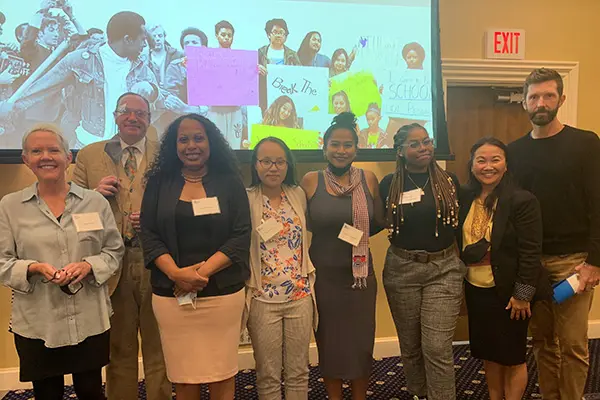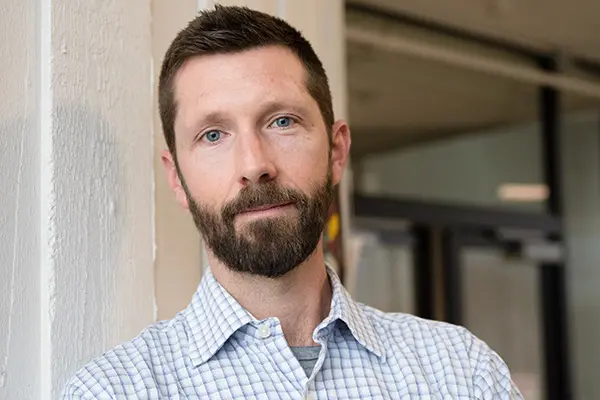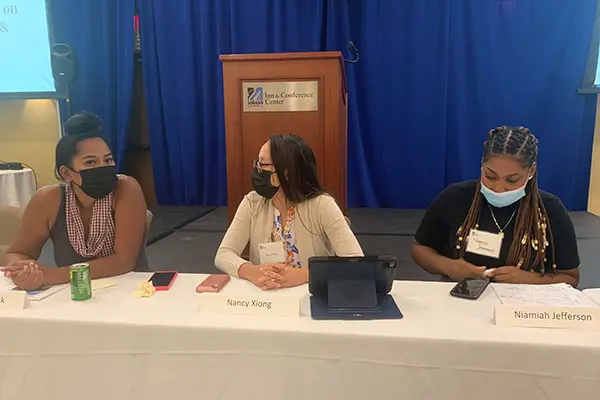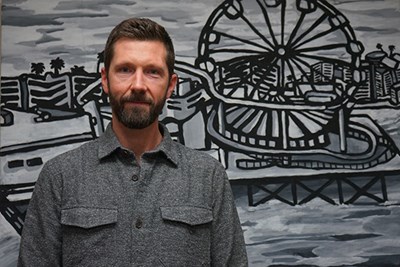Attendees Focus on Equity and Inclusion in Education
 Image by K. Webster
Image by K. Webster
11/01/2021
By Katharine Webster
More than 100 educators and student advocates met at the School of Education’s Panasuk Symposium to discuss critical race theory, why it is being banned or debated in states and school districts around the country, and how the recent political controversy is affecting schools, students and teachers.
But first, education historian and Assoc. Prof. Jack Schneider defined it and talked about its origins.
Critical race theory emerged in the 1970s and 1980s as an academic concept that examines how legal and social structures confer advantages on white people and institutionalize racial inequality, he said.
“At the time, many scholars saw racism as a ‘bug’ in the system,” Schneider explained. “Critical race theory says racism is not a bug: It’s actually a feature of the system, and racial inequality is not an accident.”
 Image by Tory Wesnofske
Image by Tory Wesnofske
The symposium, the first held by the School of Education in nearly two years, included the panel discussion on critical race theory and two workshops: one on teaching ethnic studies and another that introduced educators to History UnErased, a nonprofit that aims to remedy the omission of LGBTQ people from social studies and history curricula.
During the panel, Schneider said that while conservative activists claim that critical race theory is “anti-white,” defining all white people as racist and all people of color as oppressed victims, that’s incorrect: Critical race theory doesn’t focus on individuals’ beliefs or personal relationships, but on systems that create and maintain inequality.
“Critical race theory says that I don’t have to hate you in order to benefit,” said Schneider, who is white. “All I have to do is let the system run.”
Several educators on the panel and in the audience talked about how the term “critical race theory” has been used in their districts and elsewhere to silence educators, even though critical race theory is almost never taught in K-12 schools.
The term is also hurting the movement toward more culturally inclusive education in general – largely because what’s considered unacceptable is so poorly defined, they said. In some states, any discussion of racial inequity or racism can be punished, while elsewhere educators are censoring themselves for fear of a backlash.
“I’m concerned about teachers leaving our field because of the debate over critical race theory,” said panelist Noah Rubin, director of the Elementary Education Program at Wellesley College. “Critical race theory has become a code for silencing discussion of race and Black Lives Matter in schools.”
“Critical race theory has become a code for silencing discussion of race and Black Lives Matter in schools.” -Noah Rubin
Rubin, who is white, began his teaching career in East Harlem just as educators were beginning to use critical race theory to question traditional educational methods, lessons and norms.
“Critical race theory became a lens that helped me see my students and their issues more clearly, instead of putting all the blame on students and their families” for gaps in educational achievement, Rubin said. “It also gave me a framework to activate change.”
Rubin said that alongside critical race theory, some activists are attacking a broader educational movement toward social-emotional learning, which recognizes that children learn better when they feel socially welcome and emotionally safe – because social-emotional frameworks encourage inclusive and culturally relevant education, he said.
 Image by K. Webster
Image by K. Webster
Latifah Phillips, a member of the Tohono O’odham Nation, recently joined the Lowell Public Schools as chief equity and engagement officer. She says the Lowell system, where students speak 70 different languages and 75% are students of color, is still trying to arrive at a formal definition of educational equity, but concerns and misunderstandings about critical race theory are impeding that effort.
Three members of ARISE, the Alliance of Rhode Island Southeast Asians for Education, a group that advocates for educational equity, spoke about how they use critical race theory in their youth leadership training and organizing efforts.
Critical race theory helps to put into context “the macro factors in the struggles of historically marginalized communities,” such as how practices like mortgage redlining – the practice of denying a creditworthy applicant a mortgage for housing in certain neighborhoods – contribute to racial segregation in schools, said ARISE founder and Executive Director Chanda Womack.
Womack, who was born in a refugee camp to Cambodian parents, says education about racism and its origins is vital to helping children of color understand that they are not inferior to white children – a lesson that was driven home when her daughter came home from school one day and said, “I want to have blond hair and blue eyes.”
“We don’t have the privilege to wait to teach our young people about race,” Womack said.
The symposium was organized by Education Assoc. Prof. Phitsamay Uy and Prof. Eleanor Abrams, with Uy as moderator.




